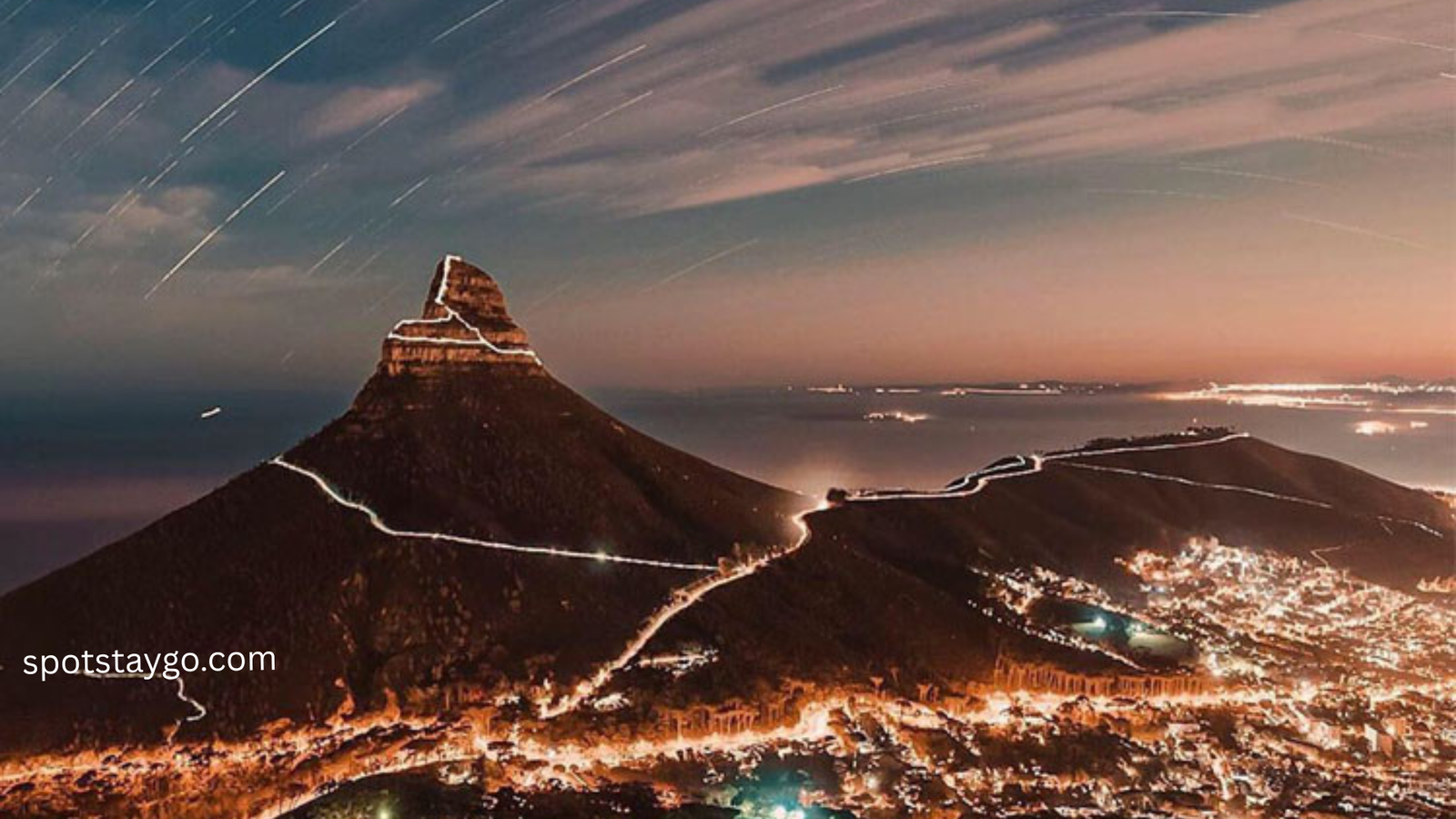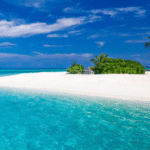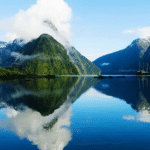Top 10 Sunset Spots in South Africa 2025- South Africa is a republic located at the southern tip of the African continent. It shares its northern borders with Namibia, Botswana, and Zimbabwe, and its northeastern borders with Mozambique and Eswatini. Lesotho is an independent country that is entirely surrounded by South Africa. An ideal 7-day South Africa itinerary can be focused on an exciting safari experience in Cape Town and Kruger National Park, or it can be based on exploring the scenic Garden Route. Now let’s talk about Top 10 Sunset Spots in South Africa 2025.
Top 10 Sunset Spots in South Africa 2025-
South Africa offers numerous spectacular spots to witness breathtaking sunsets. Popular locations include Table Mountain, Signal Hill, and Cape Town’s Bloubergstrand Beach, along with the scenic areas around the Garden Route and Kruger National Park. In addition, Chapman’s Peak, Camps Bay, and Llandudno Beach are also counted among the best options.
Top 10 Sunset Spots in South Africa 2025-
| Lion’s Head | Signal Hill |
| Table Mountain | Chapman’s Peak |
| Kalk Bay | Noordhoek Beach |
| Clifton Beaches | Zambezi River |
| Buffalo Bay | Lake Malawi |
Top 10 Sunset Spots in South Africa 2025-
1. Lion’s Head–

Lion’s Head is a mountain in Cape Town, South Africa, located between Table Mountain and Signal Hill. Its peak rises to about 669 meters (2,195 feet) above sea level. It forms a striking backdrop to the city of Cape Town and is also part of the Table Mountain National Park.
Lion’s Head is famous for its breathtaking views, offering a panoramic sight of both the city and the Atlantic coastline. The approximately one-hour hike to the summit is especially popular during full moon nights. Its slopes are also used as a launch point for paragliding.
2. Signal Hill–
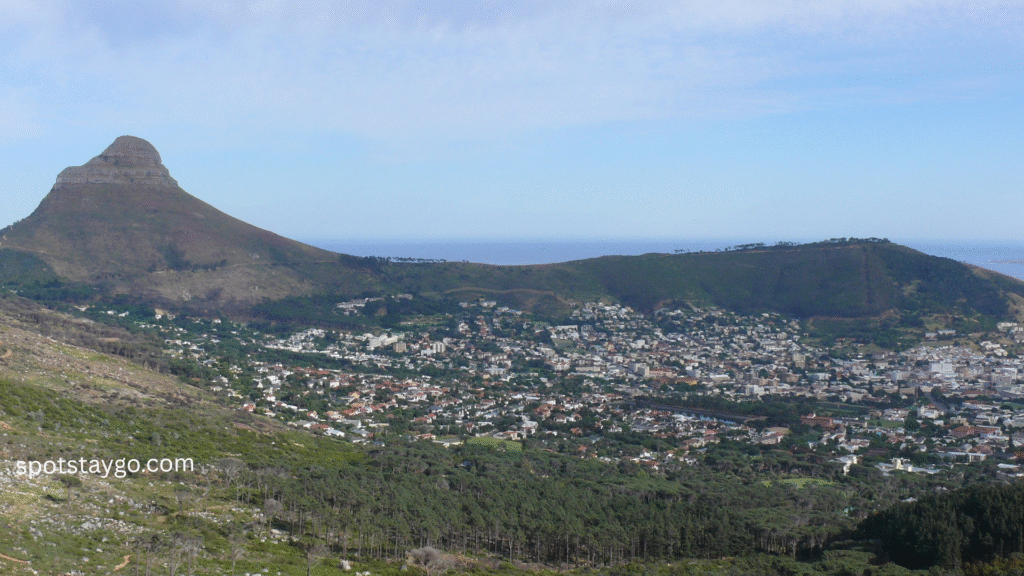
Signal Hill, also known as Lion’s Rump, is a historic flat-topped hill in Cape Town, South Africa, located next to Lion’s Head and Table Mountain.
This hill was once referred to as “The Lion’s Flank”, a name that is no longer in use. Together with Lion’s Head, Signal Hill resembles the shape of a lion sphinx. In the past, signal flags were used from this location to provide weather warnings and to send instructions to incoming ships for anchoring, ensuring they were adequately prepared for stormy conditions while in the bay. Similarly, ships could also use flags to signal for assistance — for example, if their anchor rope broke during a storm.
3. Table Mountain–
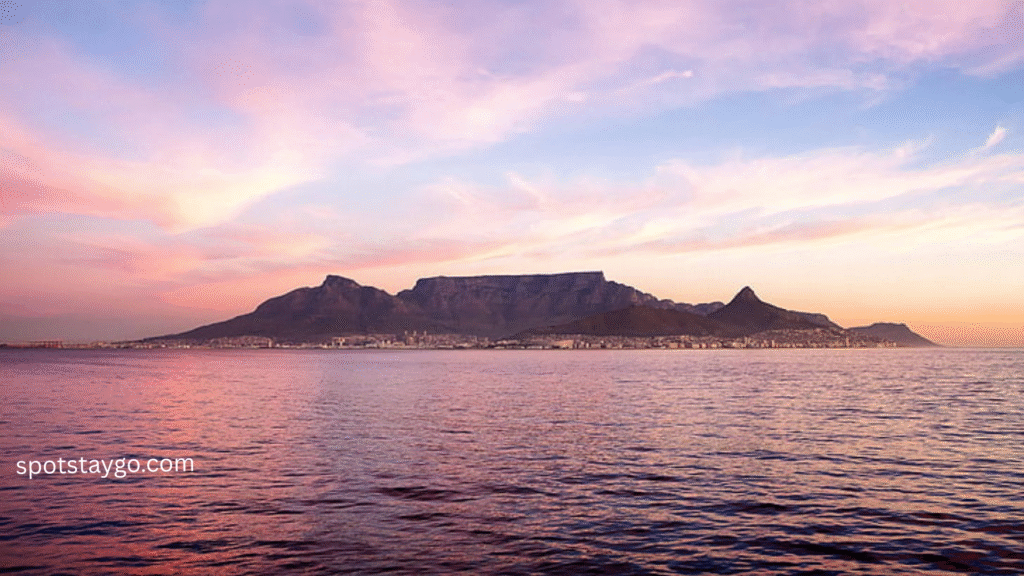
Table Mountain is a flat-topped mountain that stands as a prominent landmark overlooking the city of Cape Town in South Africa.
It is a well-known tourist attraction, with thousands of visitors reaching the summit either by cableway or through hiking trails. The mountain is home to around 8,200 plant species, nearly 80% of which are fynbos (an Afrikaans term meaning “fine bush”). The Table Mountain National Park is the most visited national park in South Africa, attracting about 4.2 million visitors annually for a variety of activities. This area was once inhabited by Khoisan-speaking tribes, such as the UriOas (“high clan”).
Table Mountain hosts a vast diversity of endemic flora and fauna. Its summit rises about 1,000 meters above the surrounding city, making the ascent a popular yet challenging mountain trek. Many of its trails are steep and rocky, requiring good fitness, preparation, and proper hiking gear.
4. Chapman’s Peak–
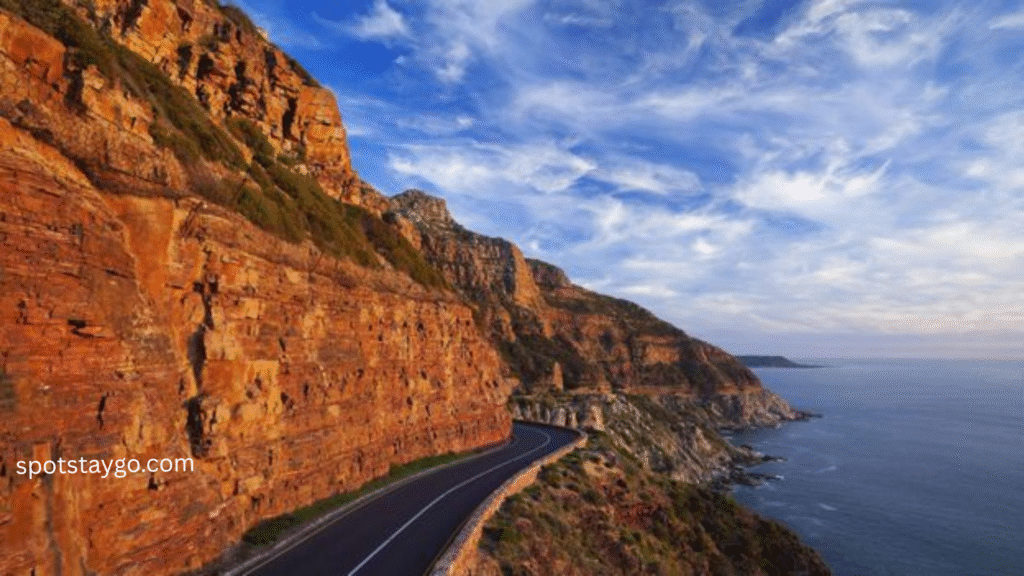
Chapman’s Peak is a mountain located on the western coast of the Cape Peninsula in Cape Town, South Africa, between Hout Bay and Noordhoek. Its western slopes drop dramatically, plunging hundreds of meters directly into the Atlantic Ocean. Cutting through the almost sheer cliffs of the mountain is a scenic roadway known as Chapman’s Peak Drive, which connects Hout Bay to Noordhoek.
This road is extremely popular among both tourists and locals. Along the route, people often stop at designated viewpoints to admire breathtaking sights of Hout Bay, Sentinel Peak, the surrounding landscapes, and the expansive Noordhoek Beach.
Chapman’s Peak Drive also forms part of the routes for two of South Africa’s largest mass-participation races — the Cape Argus Cycle Race and the Two Oceans Marathon.
5. Kalk Bay–
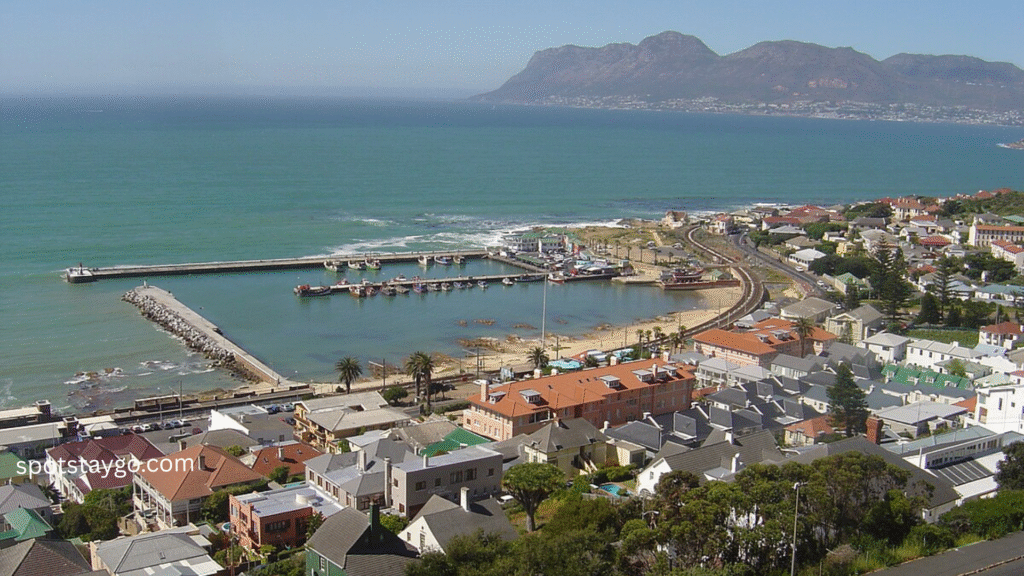
Kalk Bay is a charming fishing village and suburb of Cape Town, located on the western shore of False Bay. Much of the town is built along the slopes of mountains that rise directly from the sea. The peaks of these mountains are made of Table Mountain Sandstone and are interspersed with several valleys. The railway line from Cape Town to Simon’s Town passes through Kalk Bay, with a station located near the harbour.
Kalk Bay is adjacent to the historically connected suburb of St. James, with the boundary between them being largely nominal. Together, they form the Kalk Bay and St. James Ratepayers and Residents Association, which manages a heritage committee and works with the government on matters of safety and conservation.
In 2018, Forbes magazine named this area one of the “world’s coolest neighbourhoods,” describing it as a “seaside haven” that attracts not only the local creative community but also visitors from elsewhere.
6. Noordhoek Beach–

This stunning five-mile stretch of beach is a favorite among surfers and horseback riders, though strong winds, cold water, and powerful currents typically deter swimmers. In the surfing world, this spot is known as “Noordhoek.” At its northern end lies an excellent right-hand break that can handle large swells—especially when the tide is low and the southeast wind is blowing.
In the middle of the beach, a curious sight emerges from the sand—the rusted hull of the steamship Kakapo, protruding like a strange sculpture from the shoreline.
7. Clifton Beaches–

Clifton’s First, Second, Third, and Fourth beaches are all known for excellent sunbathing and exhilarating swims. However, among them, the Fourth Beach truly stands out. Located along Victoria Road, it is the only Blue Flag certified beach among the four sheltered sandy stretches, making it especially popular with families during the day. On calm and pleasant summer evenings—particularly on occasions like Valentine’s Day—couples and groups of young people can be seen enjoying candlelit picnics after sunset, creating a charming and romantic atmosphere.
8. Zambezi River–

The Zambezi is the fourth longest river in Africa. It is also the continent’s longest east-flowing river and the largest river in Africa to drain into the Indian Ocean. Its drainage basin covers about 1,390,000 square kilometers (approximately 540,000 square miles), which is nearly half the size of the Nile’s basin. Stretching 2,574 kilometers (around 1,599 miles) in length, the river originates in Zambia, flows through eastern Angola, then along the northeastern border of Namibia and the northern border of Botswana. It then forms part of the border between Zambia and Zimbabwe before crossing Mozambique, where it finally empties into the Indian Ocean.
The Zambezi’s most famous feature is the Victoria Falls. Other notable waterfalls include the Chavuma Falls, located on the border of Zambia and Angola, and the Ngonye Falls, near Sioma in western Zambia.
9. Buffalo Bay–
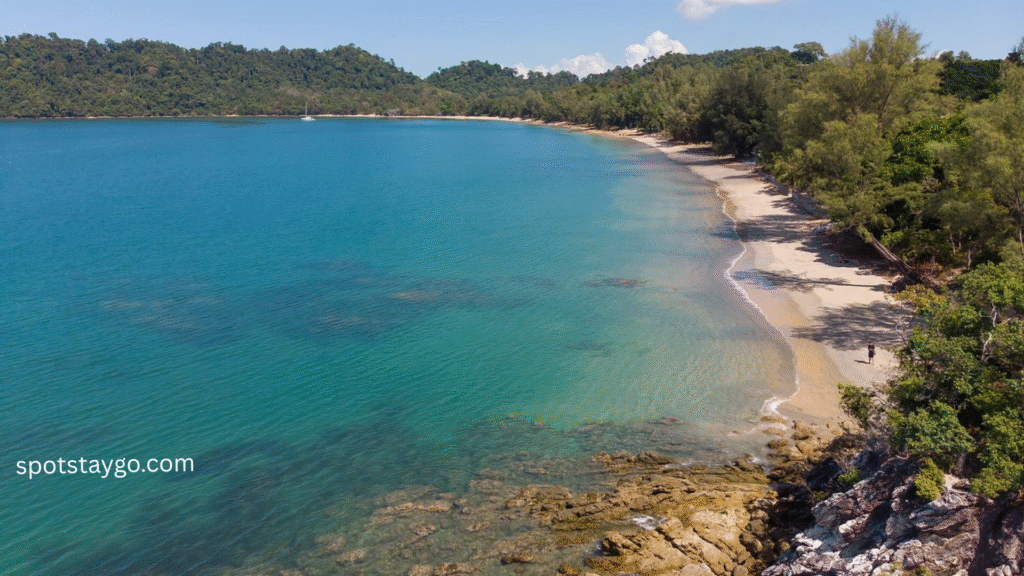
Buffelsbaai (also known as Buffels Bay and Buffalo Bay) is a small seaside village located about 15 kilometers from Knysna, in the Garden Route District Municipality of the Western Cape Province, South Africa.
Thousands of years before the arrival of European settlers, the Buffelsbaai area was home to the Khoi and San communities. These indigenous hunter-gatherers lived off the land, with a lifestyle deeply connected to the seasons and climate. They had a rich culture of their own, with distinct languages, traditions, and beliefs.
10. Lake Malawi–
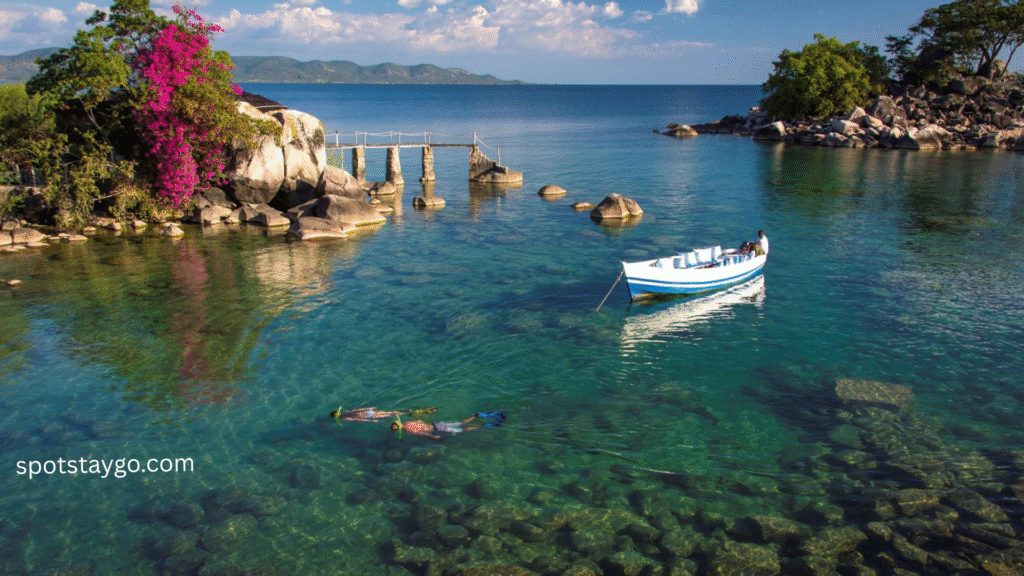
Lake Malawi, also known as Lake Nyasa in Tanzania and Lago Niassa in Mozambique (Swahili: Ziwa Nyasa), is one of Africa’s great lakes. It is the southernmost lake in the East African Rift System and lies between Malawi, Mozambique, and Tanzania.
By volume, it is the fourth-largest freshwater lake in the world, and by surface area, it ranks as the ninth-largest globally, while in Africa it is the third-largest and second-deepest lake.
Lake Malawi is home to more species of fish than any other lake in the world, including at least 700 species of cichlids.
The Mozambican portion of the lake was officially declared a reserve by the government of Mozambique on June 10, 2011, while part of the lake in Malawi is included within the Lake Malawi National Park.
Discover the 10-best Beaches in South Africa
Tanzania Safari for Families in 2025
